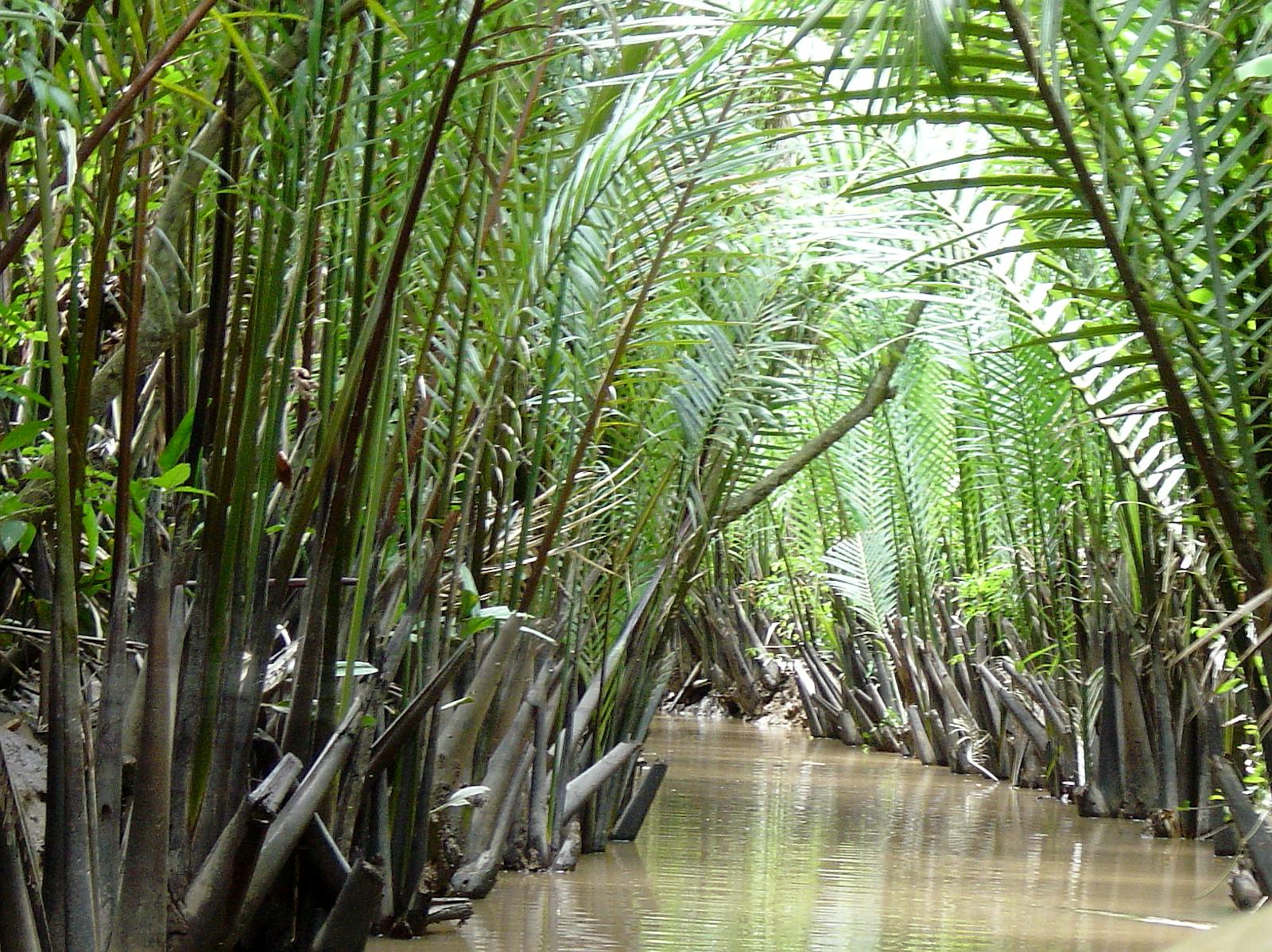Indochina Mangroves
The ecoregion’s land area is provided in units of 1,000 hectares. The conservation target is the Global Safety Net (GSN1) area for the given ecoregion. The protection level indicates the percentage of the GSN goal that is currently protected on a scale of 0-10. N/A means data is not available at this time.
Bioregion: Myanmar Coastal Rainforests & Andaman Sea Islands (IM9), Indochina Mixed Forests & Peatlands (IM12), Peninsular Malaysian & Sumatran Tropical Rainforests (IM18)
Realm: Indomalaya
Ecoregion Size (1000 ha):
2,693
Ecoregion ID:
319
Conservation Target:
17%
Protection Level:
4
States: Vietnam, Thailand, Cambodia
The Indochina Mangroves not only provide habitat for some of the world’s rarest water birds, but also host some of the most threatened ecosystems in the region. The Mekong Delta which contains the largest patch of mangroves is one of the top five ‘megadeltas’ in the world, but it has suffered extensive degradation from aerial spraying of Agent Orange, tank movements, and bombing during the Vietnam war.
is%20the%20flagship%20species%20of%20the%20Indochina%20Mangroves%20ecoregion.%20Image%20credit%20Victor%20Karasev%20%7C%20Dreamstime.jpg)
The estuarine crocodile (Crocodylus porosus) is the flagship species of the Indochina Mangroves ecoregion. Image credit: © Victor Karasev | Dreamstime
The mangroves that comprise this ecoregion line the coastal areas of the Gulf of Thailand, where regular flooding by tidal or brackish water and saline gleysols provide conditions for mangroves. The largest patch, located in the estuary of the Mekong River in southern Vietnam, decreased from over 4,000 km2 to 730 km2 in 1990 as a result of the application of herbicides during the war. More recently, they are converted for agriculture and aquaculture, especially into shrimp grow out ponds.
The mangroves in the coastal areas of Thailand and Cambodia have also been converted; extensive mangrove forests around Pattaya in Thailand have made way for coastal infrastructure, and those in Veal Renh and Kompong Som Bays in southern Cambodia have been converted for various human uses. In Vietnam, the largest area of remaining mangroves is around Camou Point at the southern tip of the country, with smaller areas in the Mekong delta region, around Cam Ranh Bay, and the Red River delta area in the northeastern coast.
Biodiversity of this ecoregion is high, especially in the mangroves both inundated by high tides and receive freshwater flows. Mangrove forests in the Red River delta have lower diversity than those in the south because of the cooler, more temperate climate and the more intense, longer period of human footprint in this delta. Overall, these mangrove forests exhibit strong zonation patterns. The pioneer species along the open coastal areas is typically Avicennia alba, which transition to Rhizophora apiculata and Brugiera parviflora upshore as seawater flux and submergence lessen. The area higher up with greater influx of freshwater is dominated by Avicennia officinalis, Sonneratia caseolaris, Nypa fruticans, and Phoenix paludosa.

Spot billed pelican. Image credit: Augustus Binu, Creative Commons
The mangroves are critically important habitats as grow-out areas and nurseries for the vast majority of fishes and shellfishes that live in the coastal areas and for deep-sea fishes.
The mangroves are also important habitat for a large number of threatened birds, such as the lesser adjutant stork, Storm’s stork, white-winged wood duck, and spot-billed pelican. The Storm’s stork is a highly secretive yet strikingly colored bird: a black and white plumage, contrasting red bill, orange facial skin, and golden-yellow eye patches. It is also the rarest stork species in the world, with less than 350 mature individuals in the wild throughout its geographic range. The species is listed as Endangered by the IUCN Red List because its current populations are highly fragmented and declining rapidly due to habitat loss and degradation.
Some of the large predatory reptiles in the ecoregion that also require conservation attention are the water monitor lizard, false gavial, and estuarine crocodile.
This ecoregion is highly threatened. Extensive herbicide spraying, conversion to commercial shrimp ponds, and timber extraction have taken a toll on all mangroves, leaving the coasts vulnerable. Sea level rise due to climate change will also alter the delicate ecological balance of these coastal areas, leaving the mangroves even more vulnerable. Very little of the ecoregion receives formal protection, and even less habitat remains outside of the current protected areas.
Priority conservation actions are to:
- Establish a strong protection network for the existing mangrove habitats.
- Restore and replant the large mangrove areas that have been converted.
- Design and implement species/taxa specific conservation programs to protect the threatened wildlife this ecoregion is supporting.
-
-
1. Wikramanayake, E, E. Dinerstein, et al. 2002. Terrestrial Ecoregions of the Indo-Pacific: A Conservation Assessment. Island Press.
2. Critical Ecosystem Partnership Fund. Ecosystem Profile. Indo-Burma Biodiversity Hotspot. 2011 Update. Oct 2012. https://www.cepf.net/Documents/final.indoburma_indochina.ep.pdf Accessed 15 December 2017. -
Cite this page: Indochina Mangroves. Ecoregion Snapshots: Descriptive Abstracts of the Terrestrial Ecoregions of the World, 2021. Developed by One Earth and RESOLVE. https://www.oneearth.org/ecoregions/indochina-mangroves/
-



